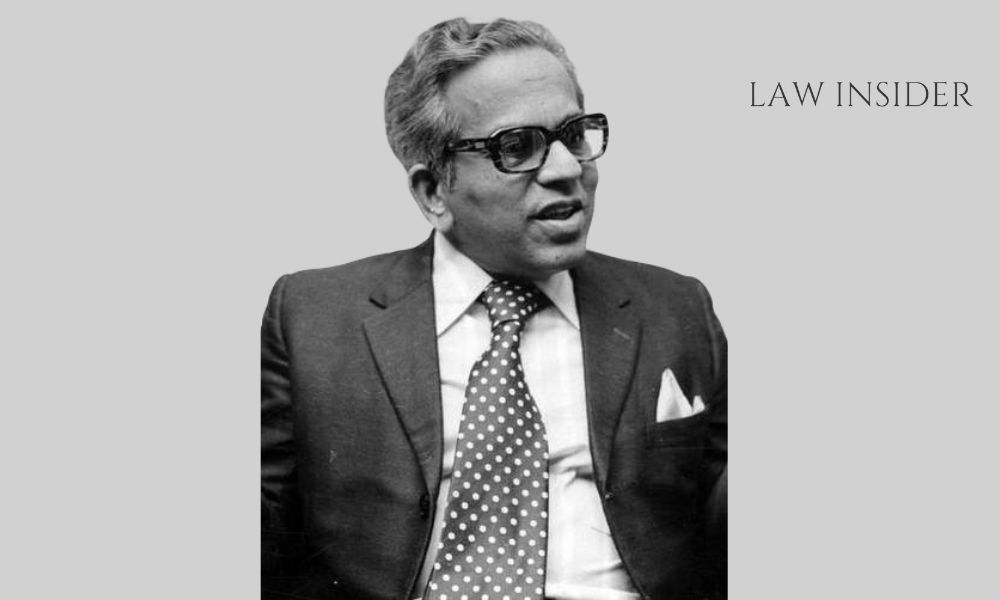Former Chief Justice of India
NAME – Yeshwant Vishnu Chandrachud
PROFESSION– Judge
BORN – 12/07/1920.
PLACE OF BIRTH – Pune, Bombay
FATHER’S NAME – N/A
MOTHER’S NAME – N/A
SPOUSE – Prabha Chandrachud
SIBLINGS – N/A
CHILDREN –2
EDUCATION – Educated at Nutan Marathi Vidyalaya High School
Graduated with History and Economics from the Elphinstone College, Bombay
Obtained his law degree in from ILS Law College, Pune
LLM from Bombay University
AWARDS – N/A
SPECIALISATION– N/A
COMMITTEE/ PANEL HEADED– N/A
BACKGROUND –
Y. V. Chandrachud was the 16th Chief Justice of India. He has the unique distinction of having had the longest tenure of 7 years and 4 months and retired on 11-07-1985.
He was born in a prominent Deshastha Rigvedi Brahmin family on 12 July 1920 in Pune, British India (now part of Maharashtra, India). Y. V. Chandrachud graduated with History and Economics in 1940 from the Elphinstone College, Bombay and had obtained his law degree in 1942 from ILS Law College, Pune.
He was also one of the earliest LLM graduates at Bombay University. He enrolled as an advocate in High Court of Bombay in 1943. He was a part time professor of law in Government Law College, Bombay, from 1949 to 1952. He was appointed Judge, High Court Bombay, on 19-03-1961 and Judge, Supreme Court, on 28-08-1972. He was appointed the Chief Justice of India on 22-02-1978.
Chandrachud was appointed Chief Justice of India during the term of the Janata government, under Prime Minister Morarji Desai. During his tenure as Chief Justice, he sent Sanjay Gandhi to jail in the “Kissa Kursi Ka” case. He was known for staunchly defending the independence of the judiciary.
His contribution has been phenomenal, with many Landmark Judgements that serve as precedents even now such as Minerva Mills Ltd. v. Union of India, A.D.M. Jalbalpur v. Shivakant Shukla , Olga Tellis v. Bombay Municipal Corpn. Etc.
CAREER TIMELINE –
1943- He enrolled as an advocate in High Court of Bombay
1949- He was a part time professor of law in Government Law College, Bombay
1952- Appointed Additional Assistant Government Pleader
1956- Assistant Government Pleader
1958- Elevated as the Government Pleader
1961- Appointed as the Judge of High Court of Bombay
1972- Elevated as the Judge of Supreme Court of India
1978- Appointed as the Chief Justice of India
1985- Retired
LANDMARK JUDGEMENTS–
Minerva Mills Ltd. v. Union of India-
A Five Judge bench including Y.V. Chandrachud laid down how a balance between fundamental rights and directive principles had to be achieved. This case is a landmark decision of the Supreme Court of India that applied and evolved the basic structure doctrine of the Constitution of India.
In the Minerva Mills case, the Supreme Court provided key clarifications on the interpretation of the basic structure doctrine. The court ruled that the power of the Parliament to amend the constitution is limited by the constitution. Hence the parliament does not have unlimited power in this context and cannot change the basic Structure of the Constitution. Thus, the parliament cannot emasculate the fundamental rights of individuals, and also includes the right to liberty and equality(which is not a fundamental right but considered a basic structure of the Constitution)
Mohd. Ahmed Khan v. Shah Bano Begum-
A Five Judge bench headed by Y. V. Chandrachud invoked a provision in The Criminal Procedure Code, 1973 to order maintenance compensation to the divorced Muslim woman. Chandrachud gave the verdict and dismissed the appeal of Mohd. Ahmed Khan, he ruled that divorced Muslim women were entitled to claim maintenance from husbands under the Civil Procedure Code, which overrides the Muslim Personal Law. The Supreme Court also concluded that the husbands’ legal liability will come to an end if a divorced wife is competent to maintain herself.
Olga Tellis v. Bombay Municipal Corporation-
In this case, the state of Maharashtra in 1981 and the Bombay Municipal Corporation decided to evict the pavement dwellers and those who were residing in slums in Bombay. The question was the whether the scope of right to life under Article 21 of the Constitution extends to slum dwellers to a roof over their heads. Although the Court refused to conclude that the expelled inhabitants were entitled to an alternative site, it ordered that slums existing for 20 years or more should not be removed unless the land is required for public purposes and, in this case, alternate sites must be provided.
CONTROVERSIES – N/A
REMARKABLE ACHIEVEMENTS– Y. V. Chandrachud has the unique distinction of having had the longest tenure as the Chief Justice of 7 years and 4 months.

